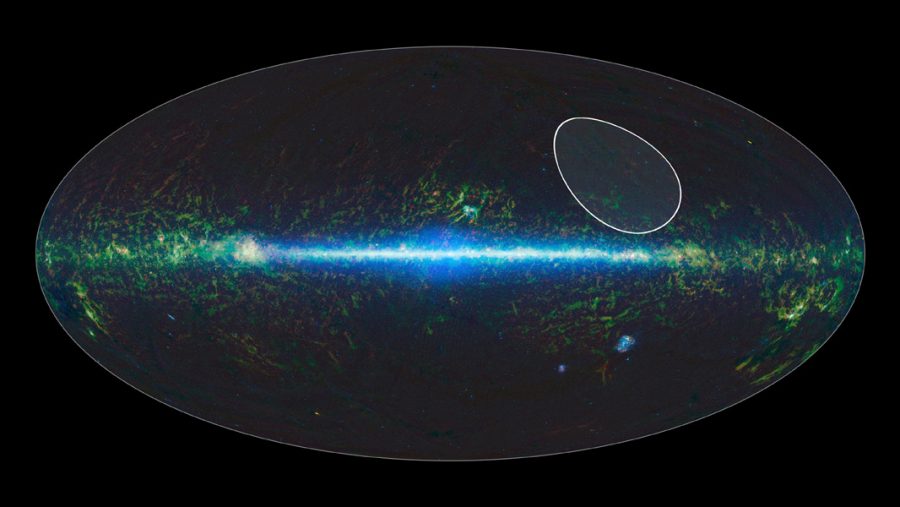UT astronomers make national news, discover apparent brown dwarf
Courtesy of NASA
This photo pinpoints the exact location UT astronomers discovered WISEA 1147. This find, which is likely a brown dwarf, was revealed earlier this month.
April 27, 2016
Filed under News, Top Stories
Astronomers at the University of Toledo made national news this month with a recently discovered new cosmic object floating alone in the Milky Way galaxy.
The newly identified object was named WISEA J114724.10-204021.3 — WISEA 1147 for short.
“This is a pretty big deal for me and the University of Toledo,” said Adam Schneider, a postdoctoral researcher, and the lead author of the study. “What I think is great is having an undergraduate involved.”
Schneider and the team that discovered the object theorizes that the free-floating planetary object is a brown dwarf.
The team estimates that WISEA 1147 is approximately 100 light years away from Earth and about 10 times the mass of Jupiter. NASA called this one of the lowest mass brown dwarfs ever discovered.
According to NASA, “brown dwarfs form like stars but lack the mass to fuse atoms at their cores and shine with starlight.”
James Windsor, the 20-year-old second-year astrophysics major working on the project, said WISEA 1147 was found in the relatively young TW Hydrae star
family and is likely only 10 million years old — which makes it too young to be a planet and more likely a brown dwarf.
Schneider and Windsor used data from two of NASA’s databases to make the discovery, the Wide-field Infrared Survey Explorer, WISE, and the Two Micron All Sky Survey, or 2MASS.
“We started looking through very large catalogues of infrared data, and we knew from previous experience that young brown dwarfs occupy a region of color space, so how bright a light is at a certain wavelength,” Schneider said. “We basically searched this color space for new objects of this type, and we found probably around 100. 50 were known objects, and then out of the other 50, this was the most interesting one.”
Windsor said he was tasked with searching for candidates resembling a brown dwarf out of thousands of potential objects in a database. WISEA 1147 was one of these objects chosen because it produced a specific color.
“My job was to do a data calculation through writing program and generating images and looking for specific outliers on a plot,” Windsor said. “Out of the potential candidates this one produced a much redder color. Which usually implies the object is younger.”
This brown dwarf’s very young age will help researchers and astronomers learn more about the formation of stars and brown dwarfs, specifically in their younger years of development. This discovery will also help
researchers learn more about the development about our own solar system and how it came to be, according to Windsor.
According to NASA, this has only just revealed new clues surrounding these quiet worlds drifting in space.
“Another reason that astronomers want to study these isolated worlds is that they resemble planets but are easier to study,” according to the NASA article about the discovery. “Planets around other stars, called exoplanets, are barely perceptible next to their brilliant stars. By studying objects like WISEA 1147, which has no host star, astronomers can learn more about their compositions and weather patterns.”
WISEA 1147 cannot be considered a planet because it does not orbit a star and is free-floating out in space.
There is a small chance this object was kicked out of a solar system, but this probably is not the case because it is so young and that process takes millions of years. This object probably formed on its own, Schneider said.
“This is all unexpected, I never thought this study would get so much attention,” Windsor said. “I really want to be an active researcher in astronomy. Whether that is theoretical or observational or at university I don’t know, I just want to do science.”
Other authors include Michael Cushing, an associate professor of astronomy at UT and Ritter Planetarium director; and Ned Wright of University of California, Los Angeles.
This study can be found in the latest edition of the Astrophysical Papers.











